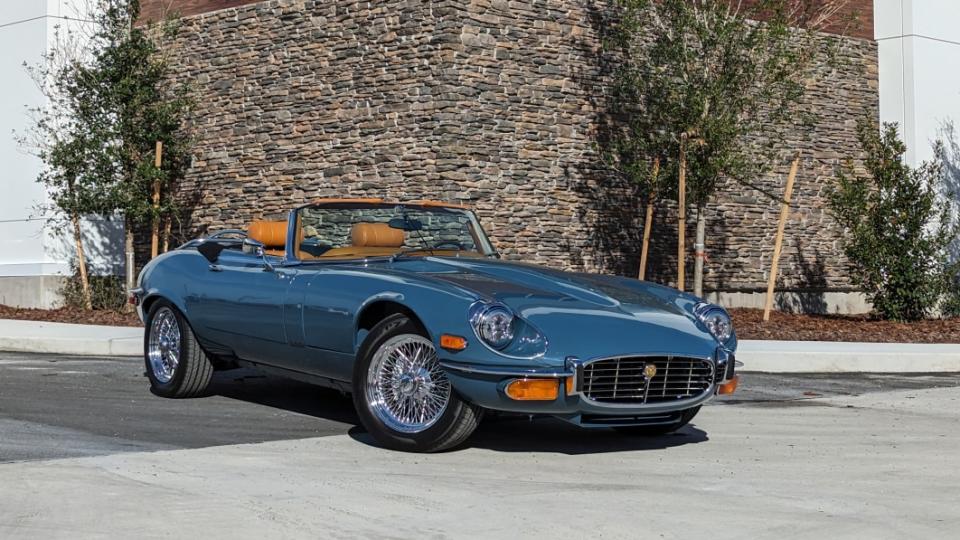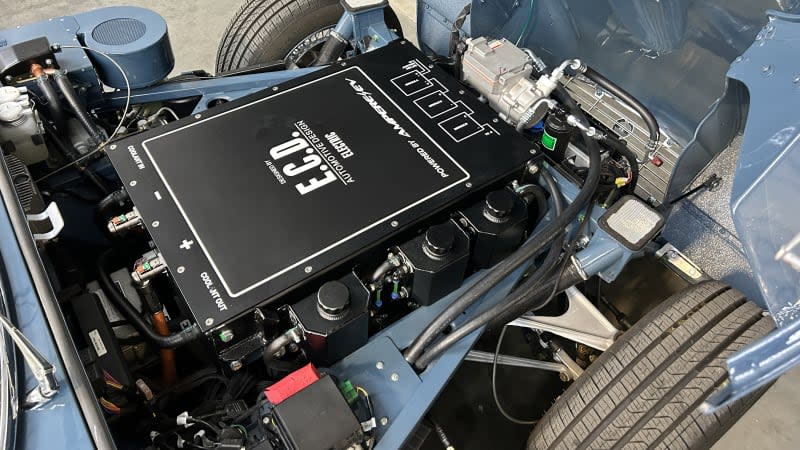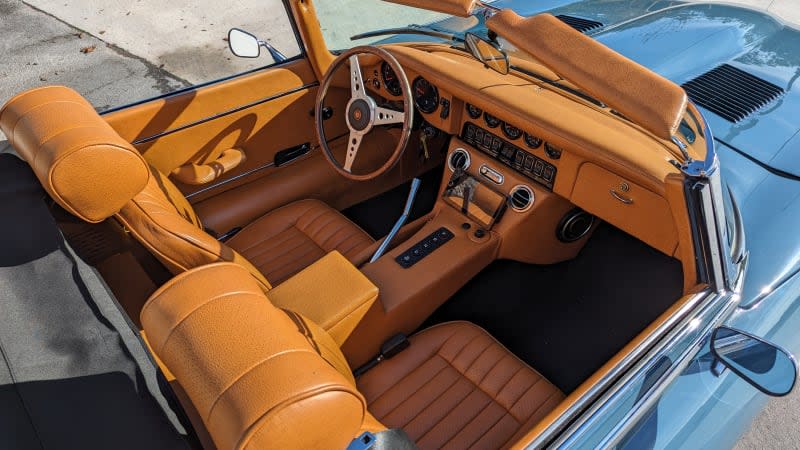ECD Auto Design Jaguar E-Type Electric First Drive: EV restomods have a bright future

KISSIMMEE, Fla. — If you’ve ever dipped a toe into the restomod world before, there’s a good chance you’ve heard of the Florida-based company ECD. Originally known as East Coast Defender for the company’s earliest efforts restomodding Land Rover Defenders, it’s now just “ECD Auto Design.” That’s because there’s a whole lot more than just Defenders being cranked out of the workshop these days.
And while we’ve already driven its Land Rover offerings in the Defender and Range Rover Classic, today it’s time to take the company’s latest creation for a spin: the ECD Jaguar E-Type. ECD announced its foray into the E-Type world about a year and a half ago, and by the time we showed up, it’d already produced seven restored and/or heavily modified E-Types.
Before we get too far into first impressions, though, some history. The E-Type, formally known as the XK-E here in the states, was produced between 1961 and 1974. It was a bombshell of a sports car when new, touting impressive performance for a solid price from both its inline-six and V12 engines. Jaguar went through three main iterations of the XK-E before wrapping up sales here: Series I, Series II and Series III. And while ECD has restored a Series I, it’s focusing on the more widely available (and more affordable) Series II cars for this project. The E-Type was available as a coupe or convertible, and while ECD is allowing you to stick with either of the original powertrains for restoration builds, it’s also offering some rather tempting swaps.

If there’s something you should know about ECD, it’s that this company loves a good American V8. You’ll find an LS- or LT-based General Motors V8 in most of its Defender builds, and that’s exactly what ECD is offering in the E-Type, too. GM’s 450-horsepower LT1 can be plopped under the long hood of the E-Type should you want to turn it into a tire-destroying muscle machine. On the other end of the spectrum is an electric conversion option, which is the E-Type variant we got to drive.
Before you scream “sacrilege!” we won’t bury the lede on this one: An all-electric E-Type is actually a hoot to drive. Admittedly, what makes it fun to drive is also what makes other modern-day sports cars fun to drive. It’s lightweight at just 2,940 pounds (that’s 60 pounds less than the V8-powered version), features a 51/49 weight balance, has a 305-horsepower motor doling out power solely to the rear wheels … and you can take the roof off! Today’s EVs, even the smaller ones, are considerably heavier than this one. Also, while Porsche is prepping its electric Boxster, you simply can’t go out and buy a new electric convertible sports car, because they don’t exist.

Of course, this EV is light and massively characterful to drive because it’s quite literally an E-Type from the 1970s that’s had its inline-six heart ripped out. There are no regulations or crash standards it needs to adhere to, so you’re left with what is essentially a “new” E-Type, but better. And we do mean better, too, because ECD will install an upgraded suspension and braking system for more modern (and safer) dynamics. The ride is a good bit stiffer than a regular E-Type, but the body control and roll resistance is much improved, lending greater confidence when driving it with vigor. You’ll still need to use a fair amount of lock from the delicate wooden steering wheel to get turning action, but this electric E-Type genuinely feels light on its feet and balanced when you swing it left or right. The brakes do a slightly worse job of masquerading as modern performance car brakes, but they’re still better than what stock brakes from the 1960s or 1970s will give you. Plus, you can turn the regenerative braking on or off depending on whether you want the car to automatically decelerate once you lift off the throttle – ECD says it’s working on a one-pedal drive mode for future builds, too.
Slamming the throttle brings the instant-on shove of a performance EV, and the corresponding electric whine you can hear with the roof off is entertaining. We’d guess the 0-60 mph time is right around 5 seconds as it stands with the 305-horsepower motor, but ECD says it’s working on developing a more powerful 450-horsepower electric motor for those who want even better acceleration. After driving the E-Type around at its current power level, though, we’re left wondering if more power would make the experience any better. The E-Type was used in racing many years ago, but as a road car, this amount of power with its corresponding suspension and braking capabilities feels perfectly in balance.

 Yahoo Autos
Yahoo Autos 
